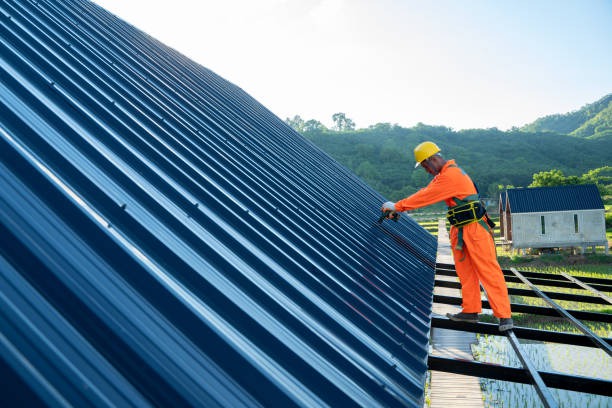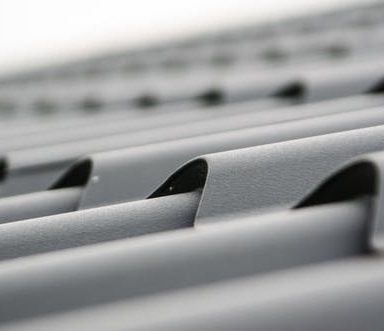Have you ever found yourself staring at the dizzying array of roofing and siding options at the local hardware store and wondered how on earth you’d determine which materials are worth your investment? If you’ve been nodding along, don’t worry—you’re not alone. Picking out reliable materials for your home’s exterior can be quite a daunting task. Let’s walk through this together, step by step, to help you make a confident decision.
1. Recognizing Your Climate
Climate plays an enormous role in determining which roofing and siding materials will stand the test of time. Are you dealing with harsh winters, scorching summers, or perhaps both? Different materials respond differently to weather extremes. Additionally, regular maintenance, such as siding repair, is essential to ensure your home remains protected and looks its best, no matter the climate challenges.
For Cold Climates
-
Metal Roofing: Highly durable and can shed snow easily.
-
Vinyl Siding: Resistant to moisture and often insulated for added warmth.
For Warm Climates
-
Clay Tiles: Great for reflecting sun rays and maintaining cooler temperatures indoors.
-
Stucco Siding: Ideal for dry, hot environments, offering excellent insulation.
2. Durability and Longevity
When it comes to your home’s exterior, you want materials that will last. But how do you assess durability?
Conduct Research
-
Manufacturer’s Warranty: A good warranty often indicates a reliable product.
-
Online Reviews: Real-world feedback from homeowners can provide valuable insights.
Materials to Consider
-
Asphalt Shingles: Budget-friendly, lasts around 20-30 years.
-
Fiber Cement Siding: Highly durable and can last up to 50 years.
3. Safety and Environmental Impact
These days, it’s essential to consider the eco-friendliness and safety of your material choices.
Eco-Friendly Options
-
Recycled Metal Roofing: Often made from recycled aluminum or steel.
-
Wood Siding: Sustainable if sourced from well-managed forests.
Safety Features
-
Fire Resistance: Look for materials that are highly fire resistant, especially if you live in a wildfire-prone area.
-
Toxin-Free: Ensure that your materials don’t release harmful chemicals.
4. Cost and Budgeting
While quality is key, you can’t ignore your budget constraints. Balancing cost and quality is crucial.
Estimate Costs
-
Material Costs: Research average costs for different materials.
-
Installation Fees: Include these in your budget to avoid nasty surprises.
Cost-Effective Choices
-
Vinyl Siding: It’s often affordable and easy to install.
-
Asphalt Shingles: Generally cost-effective for roofing.
5. Visual Appeal
Your home’s exterior is the first thing people notice, so aesthetics matter. Materials come in various styles and colors to match your home’s design. Roof installation Portland offers various options to ensure that your home not only looks great but is also well-protected from the elements.
Roofing Options
-
Architectural Shingles: For a more dimensional look.
-
Metal Roofing: Often available in multiple colors and styles.
Siding Styles
-
Board and Batten: Offers a rustic look.
-
Lap Siding: A classic, clean-lined option.
6. Maintenance Requirements
Some materials are decidedly low-maintenance, while others require more frequent attention. Understanding maintenance needs helps you plan for the long term.
Low-Maintenance Options:
-
Vinyl Siding: Easy to clean with just soap and water.
-
Metal Roofing: Requires minimal upkeep, primarily occasional cleaning.
7. Getting Professional Advice
Sometimes, the best way to ensure you’re making the right choice is to seek professional help.
Consult Contractors
-
Expert Opinions: Contractors can provide insights into what materials are best suited for your specific needs.
-
Assessment Services: Taking advantage of professional roof inspection services can identify issues you might not see.
8. Energy Efficiency
Energy-efficient materials can save you money on utilities and provide more comfort in your home.
Energy-Saving Materials
-
Cool Roofing: Materials designed to reflect more sunlight and absorb less heat.
-
Insulated Siding: Helps maintain interior temperatures, reducing reliance on heating and cooling systems.
9. Manufacturer Reputation
A well-reputed manufacturer often means higher-quality products. So, how can you assess this?
Check for Certifications
-
Industry Awards: Awards can signify superior quality.
-
Third-Party Certifications: Look for materials that meet high standards set by third-party organizations.
10. Warranty and After-Sales Support
A strong warranty can be a good indicator of a product’s durability and the manufacturer’s confidence in it.
Good Warranty Features
-
Long-Term Coverage: The longer, the better.
-
Comprehensive Terms: Look for warranties that cover both materials and labor.
Research local and regional companies that specialize in specific materials and offer generous warranties. This practice ensures you’re getting quality service.
Final Thoughts
Choosing the right roofing and siding materials for your home doesn’t have to be a stressful endeavor. By considering factors like climate, durability, safety, cost, and aesthetics, you’re well on your way to making an informed decision. Remember, sometimes the best investments require a bit of upfront research and planning but result in long-term satisfaction.
Keep these tips in mind, and you’ll have a home exterior that not only looks good but performs well for years to come. Approach this project with patience and due diligence, and you’ll definitely end up with the perfect exterior for your home.





